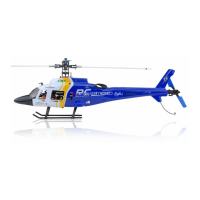Notice d´Utilisation
Gebruiksaanwijzing
Bedienungsanleitung
Operating Instructions
BELT-CP V2 CX 2,4 GHz
mit Rumpfaufbau / with fuselage / avec fuselage / met romp
No. 002655
BELT-CP V2 2,4 GHz
mit Trainerhaube / with canopy / avec cabine / met trainerkap
No. 000014
RC Elektro-Helikopter RTF
mit 2,4 GHz 6-Kanal Fernsteuersender
Electric RC Helicopter RTF
with 2.4-GHz 6-channel remote-control transmitter
Hélicoptère électrique RC prêt à voler
avec radiocommande de 2,4 GHz à 6 voies
RC elektro helikopter RTF
met 2,4 GHz 6-kanaal remote stuurzender
RC Elektro-Helikopter RTF
mit 2,4 GHz 6-Kanal Fernsteuersender
Electric RC Helicopter RTF
with 2.4-GHz 6-channel remote-control
transmitter
Hélicoptère électrique RC prêt à voler
avec radiocommande de 2,4 GHz
à 6 voies
RC elektro helikopter RTF
met 2,4 GHz 6-kanaal remote
stuurzender

